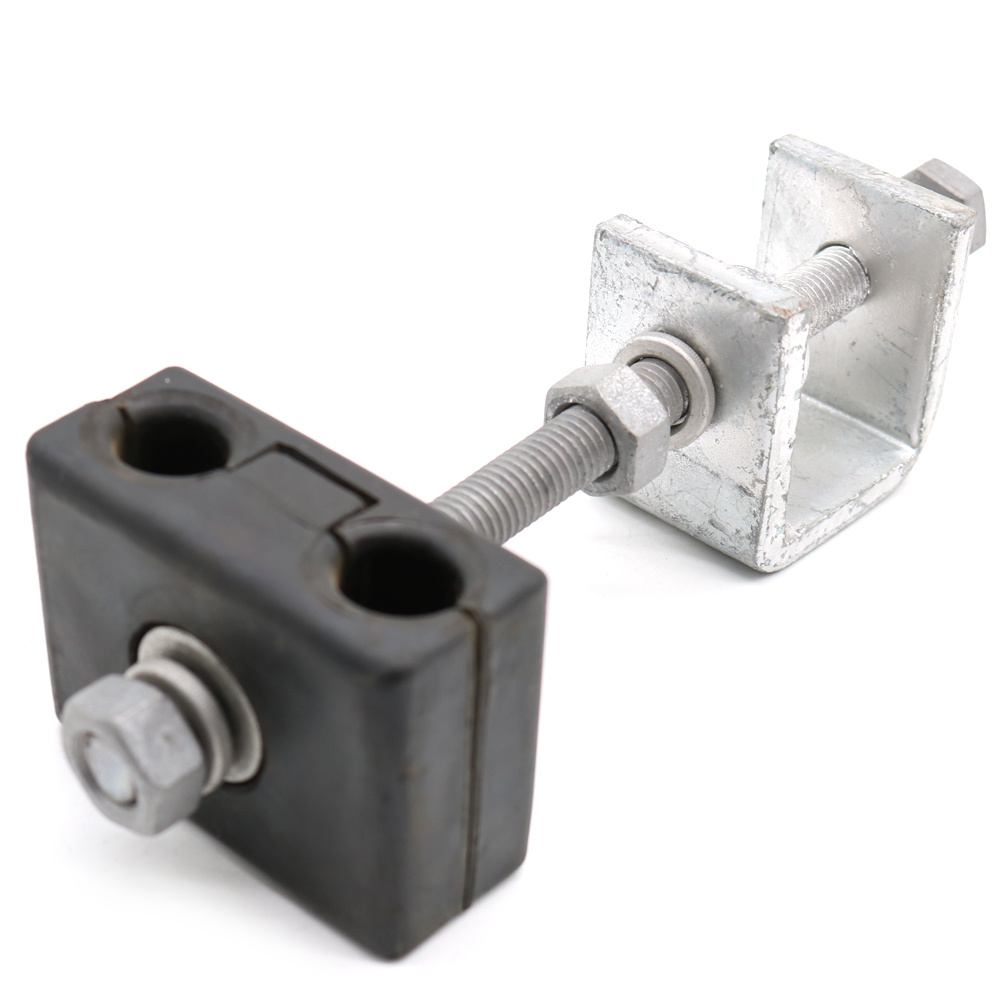
A downlead clamp is a device used in overhead transmission lines and other applications. It helps to secure and support the downleads of electrical conductors. The clamps work in areas where the conductors transition from overhead lines to equipment. The main purpose of the clamp is to provide mechanical support and strain relief to the conductor. This ensures the conductor remains attached to the structure. It also allows for flexibility to accommodate thermal expansion and contraction. Downlead clamps are from durable materials such as aluminum, steel, or composite materials. These materials are capable of withstanding the mechanical stresses and environmental conditions. The downlead clamp grips the cable to prevent it from swaying in the wind. Swaying could could lead to damage or disconnection.
Features of downlead clamp
Downlead clamps have various features that help provide secure and reliable support for electrical conductors. They also ensure the safe and efficient operation of the transmission infrastructure. The following are the common features for downlead clamps.
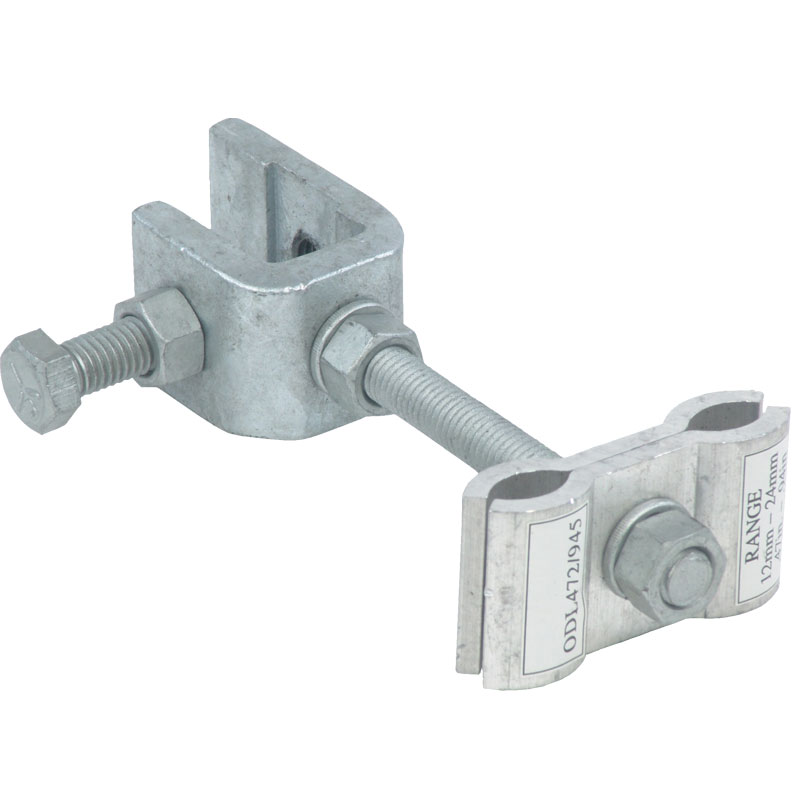
- Strength and grip – downlead clamps are from galvanized steel which offers exceptional strength and durability. The high-quality material can withstand harsh weather conditions like strong winds.
- Secure hold – the clamp has strong clamping mechanisms that grips the cable. This prevents it from swaying. This helps to reduce the risk of cable damage to ensure uninterrupted power transmission.
- Weight distribution – downlead clamps distribute the weight of the cable across the structure. This helps to reduce stress on the cable and attachment points on the tower to prevent wear and tear.
- Reduced strain – the clamp acts as a buffer against tension on the cable during sudden wind gusts or ice accumulation.
- Cable management – the clamps help maintain proper spacing between different cables. This prevents entanglement which could lead to short circuits or power outages. They also have a cushioned interior that protects the cable from abrasion against the pole.
- Variety sizes and designs – the clamps are available in different sizes and designs to accommodate various cable diameters and types.
- Attachment options – the clamp features versatile attachment points that allow them to fix to different pole designs and materials. This ensures compatibility with diverse infrastructure configurations.
- Minimal maintenance – they are also built to withstand the elements and need minimal maintenance. Their design ensures reliable performance for long.
Application areas of downlead clamp
Downlead clampsfind use in various applications to ensure safe and controlled succession of cables across. The clamps are versatile and adaptable which makes them invaluable tools. These are for ensuring the safe and efficient flow of electricity, data or lightning. The following are the various applications of downlead clamps in the industry.
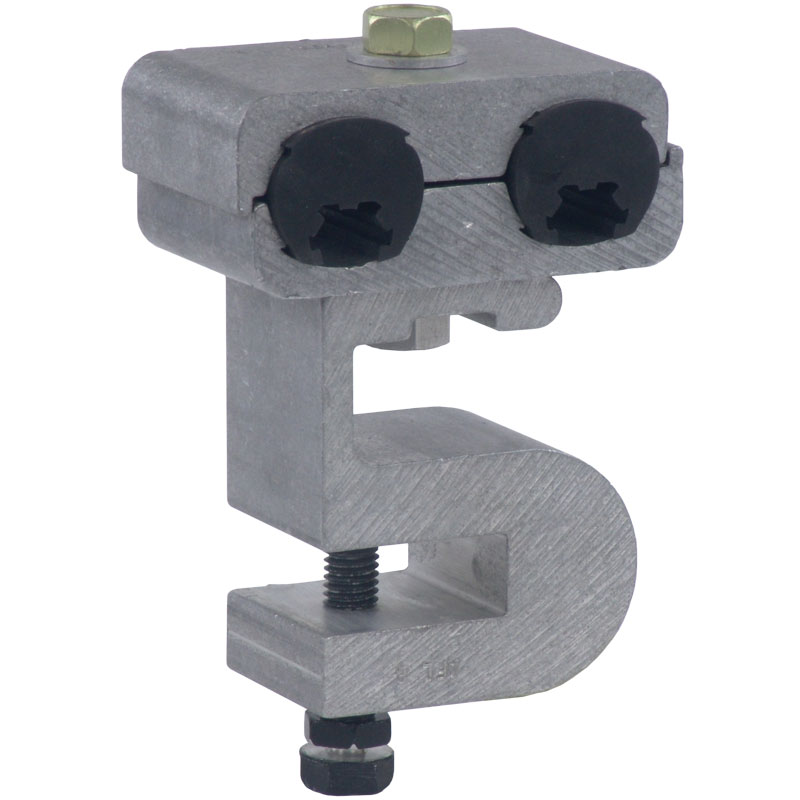
- Telecommunications – downlead clamps secure and support cables like coaxial cables, fiber optic cables and communication wires. They apply in cable TV, broadband internet, telephone network and data centers.
- Electrical power distribution – they secure and support power cable running from overhead power lines to buildings. They prevent sagging cables and maintain proper tension for a reliable electrical connection.
- Transmission lines – the clamps work in high voltage transmission lines to secure and support downleads. This also includes jumper cables that connect the transmission lines to distribution equipment. They promote the stability and integrity of the connections.
- Antenna installations – the clamps provide support for cables that connect antennas to communication equipment. They also maintain proper positioning and alignment of antennas. This ensures an optimal transmission and reception.
- Outdoor lighting – downlead clamps work to secure the cables that connect lighting fixtures to the power supply. They also help to relief and protect the cables from external forces such as wind and physical impact.
- Cable management – downlead clamps work for general cable management purposes in various settings. This includes residential, commercial and industrial buildings. They also help to organize and secure cables running along walls, poles or other structures.
- Street signage and traffic control – the clamps secure and support cables for street signage, traffic lights and other traffic control systems. This ensures stability and reliability of the electrical connections in outdoor environments.
Selection of downlead clamps
Proper selection for downlead clamps helps to ensure the safe and controlled origin of cables in transmission lines. it involves considering several features that influence the decision-making process of the clamps. The following are the factors to consider when selecting downlead clamp.
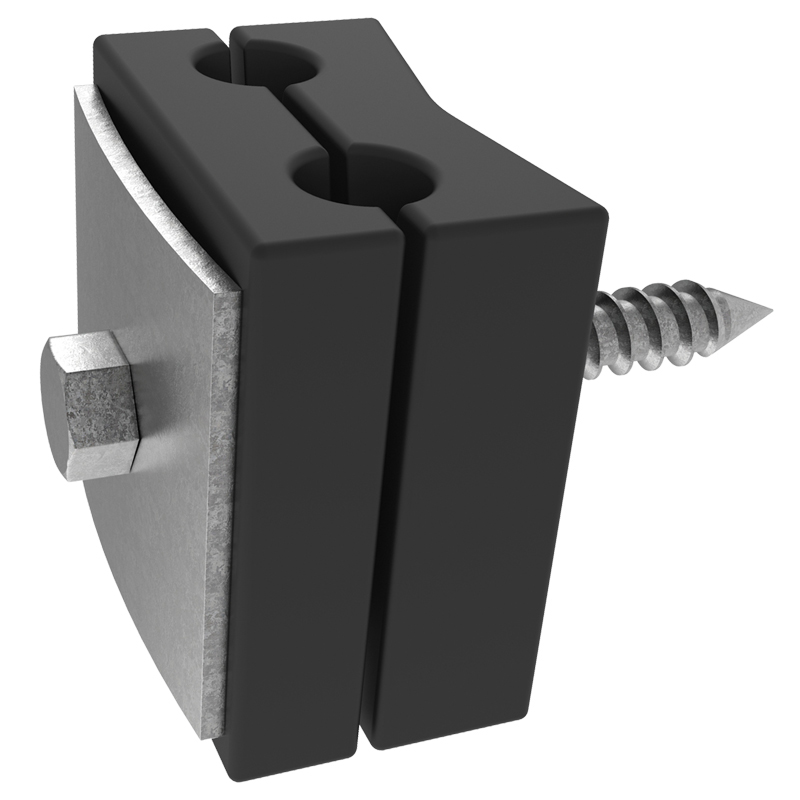
- Cable type and diameter – the clamps must be compatible with the size and type of conductor used. Consider the conductor diameter, configuration and material composition.
- Voltage rating – ensure the voltage levels have ratings for the transmission lines. The voltage rating depends on insulation and electrical properties. This is to maintain safety and performance.
- Corrosion resistance – select a clamp with corrosion resistant materials to prevent damage. It also helps to ensure long term reliability.
- Installation method – check the ease of installation and compatibility with existing hardware.
- Cost – consider factors such as initial cost, installation expenses and maintenance requirements.
- Mechanical strength – check the mechanical strength of the downlead clamp. Ensure they can withstand the mechanical stresses. This is especially during installation, operation and environmental conditions.
Installation guide for downlead clamps
The installation process for downlead clamps includes various steps. They ensure the secure and reliable connection between the overhead line and grounding system. Additionally, it is advisable to consult with industry experts for guidance on the best installation method for your downlead clamp. The following is a general installation process of the downlead clamp.
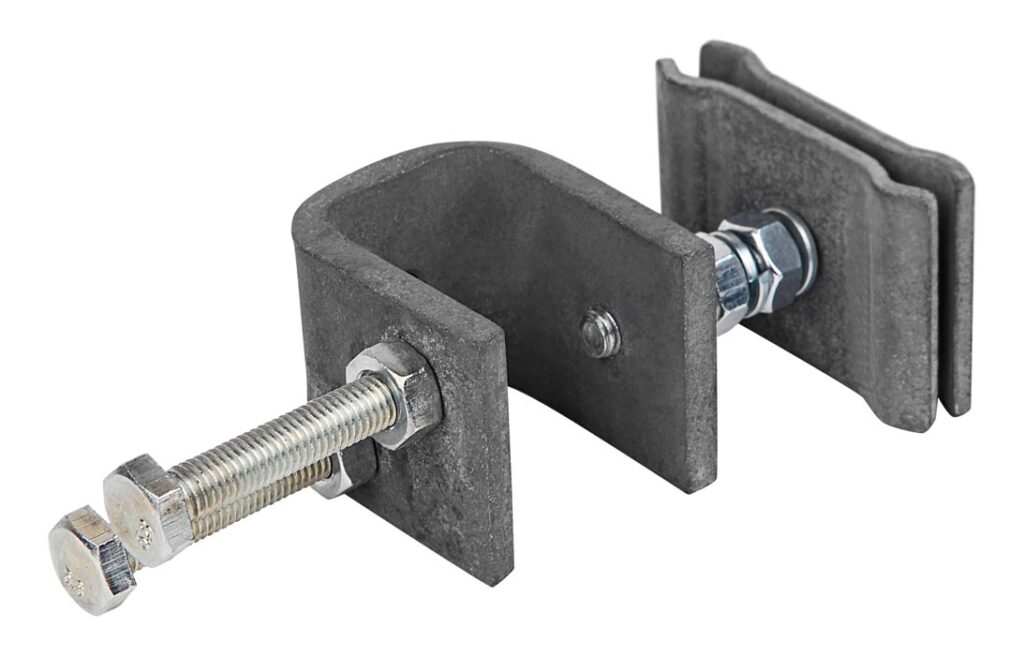
- Preparation – collect all the necessary tools required for the installation. Thes include downlead clamp, suitable fasteners, wrenches and safety equipment.
- Inspection – inspect the downlead clamp to ensure it is in good condition and free from any defects or damage.
- Location selection – select the suitable location for installing the downlead clamp. Consider factors such as proximity to the overhead transmission line and type of structure.
- Cleaning and surface preparation – clean the surface to remove any dirt, rust or contaminants. This is to ensure a clean and smooth surface for optimal contact attachment.
- Clamp positioning – position the downlead clamp on the conductor on the desired location. Ensure the clamp aligns and provides support and stability to the downlead.
- Fastening clamp – use the suitable fasteners to secure the downlead clamp to the conductor.
- Torque specifications – use a wrench to ensure the recommended torque. This helps to achieve the proper clamping force causing damage.
- Insulation – ensure the features are properly positioned and do not interfere with the conductor. Insulation prevents unintended electrical paths.
- Final inspection – conduct a final inspection to ensure the downlead clamp is securely attached, aligned and free from any defects.
- Documentation – maintain detailed records of the installation including the date, location and other details.
Maintenance practices of downlead clamp
Regular maintenance helps to ensure the reliability and safety of an overhead transmission system. It also helps to identify and address potential issues that may cause failures and accidents. Additionally, it helps to extend the lifespan of downlead clamps and ensure the continued reliability of the overhead transmission system. The following is basic guide for maintenance of downlead clamps.
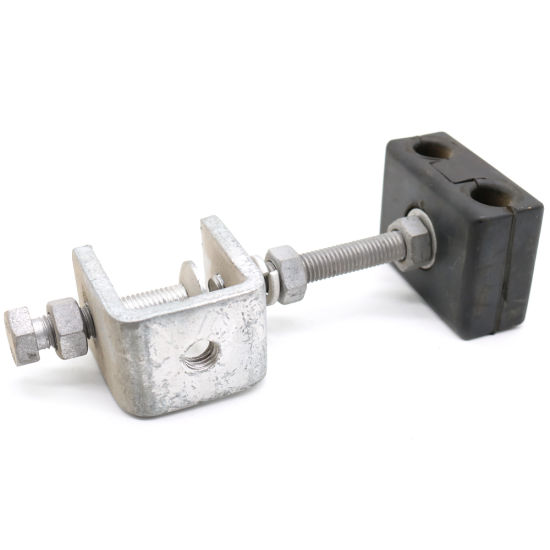
- Conduct regular visual inspections to check for signs of wear, corrosion or physical damage.
- Check any mechanical issues such as cracks, deformities or misalignments. This is to maintain the structural integrity.
- Confirm the proper alignment of the conductor and the supporting structure.
- Lubricate the moving parts according to the manufacturer’s recommendations.
- Inspect the entire surface of the downlead clamps especially on joints, welds and areas with dissimilar metals.
- Assess how well the downlead clamp has withstood environmental conditions. Check for signs of degradation due to exposure to UV radiation.
- Perform regular visual inspections of the downlead clamps to check for signs of wear, corrosion or any physical damage.
- Clean the downlead clamp to remove dirt, dust or any corrosive substances. Clean the surface to maintain optimal electrical conductivity and prevents corrosion.
- Apply corrosion-resistant coatings or compounds to downlead clamps in areas with high humidity or corrosive environments.
- Check the tightness of fasteners and tighten them to the recommended torque specifications.
- Inspect the insulation for any damage and replace insulation components to maintain electrical safety.
- Engage qualified professionals to conduct detailed inspections of the entire overhead transmission system.
- Consider the environmental conditions of the installation site and address challenges such as extreme temperatures and high humidity.
- Maintain records of the installation including date, location and specific details related to downlead clamp.
Frequently asked questions
This is a device used to secure and support downleads of electrical conductors where they transition from overhead lines to equipment.
Downlead clamps are from materials such as aluminum, steel or composite material capable of withstanding the mechanical stresses.
Downlead clamps use various clamping mechanisms to securely grip the conductor without damage. these may include bolted, spring-loaded or wedge type mechanisms.
The primary function of a downlead clamp is to provide mechanical support and strain relief to conductor. This is to ensure it remains securely attached to the structure while allowing flexibility.
